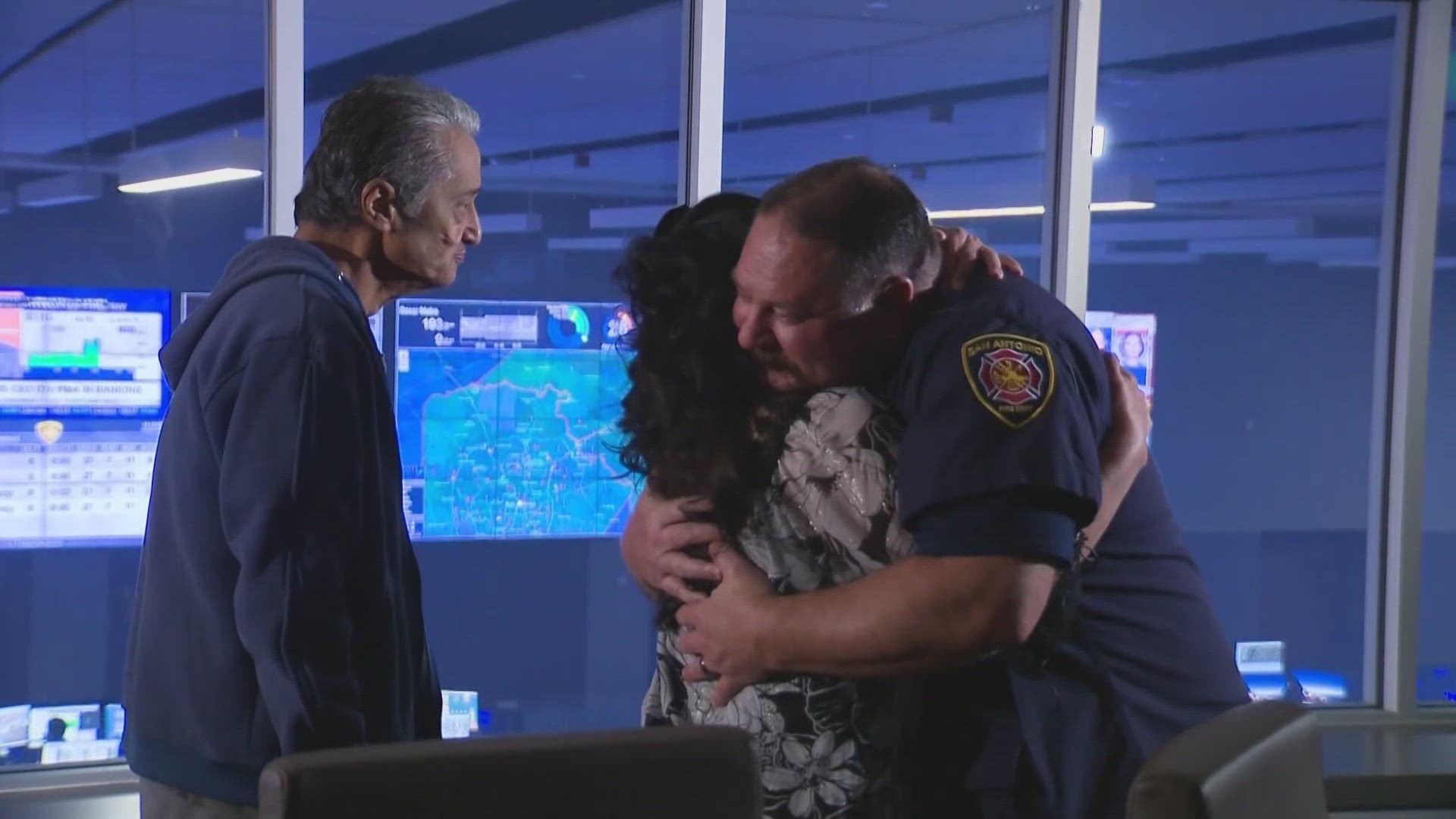SAN ANTONIO — A relatively new technology is saving lives in San Antonio.
In 2020, the San Antonio Fire Department (SAFD) became the first agency in the country to pilot and implement the ‘GoodSam’ program. It allows dispatchers to video chat 911 callers, giving them an inside look at fire and medical emergencies before crews arrive.
On Thursday, KENS 5 exclusively covered an emotional reunion between paramedics and a patient.
With tears in her eyes, Rachel Young embraced SAFD communications dispatcher Randy Ruston. The last time they spoke, he was the calming voice on the other side of her 911 call.
Rachel’s husband, Keith Young, suffers from kidney disease. On August 4, his potassium reached lethal levels.
“We were totally blessed that it happened on a Sunday because normally I would be at work,” Rachel said.
Keith recalls feeling 'extremely tired' as his heart stopped.
“I was upstairs about to take a shower, so I started pounding on the floor,” he said. “Usually, she doesn’t hear it but this time she did. By the time she got upstairs I said, ‘I can’t breathe.’ She left to go get the phone and that’s when I slumped. Everything went black for a long time and then I woke up in the hospital. She told me what happened, and I was incredulous!”
Rachel says she panicked at the thought of losing her husband of 41 years.
“He was foaming at the mouth and I knew that was probably aspiration,” she said. “I knew I needed to get him on his side, so I prayed for strength. Every ounce of strength I received was not mine. Randy asked me if there was a pulse, and I couldn’t find one.”
So, Randy texted a link to Rachel’s phone. When she opened it, Randy was able to see Keith clearly.
“It gives us access to their microphone and camera,” Randy explained. “We are able to see what they see at the emergency incident. If it’s a patient with a medical emergency, we are able to look at their heartrate, respiratory rate, skin color, skin moisture; all the things we use for assessing a patient and how critical they are.”
Using the GoodSam program, Randy was able to guide Rachel through CPR until paramedics arrived.
Keith was rushed to the hospital in critical condition, but he has since been released and is doing well. Rachel calls it 'a miracle.'
“Keith wouldn’t be here without you, that’s for sure,” Rachel told Randy during their meeting.
After the close-call, Rachel says she will be taking a CPR class.
“Mrs. Young is the hero,” said Randy. “The reality is, it doesn’t matter how good of a dispatcher I am. I could sit and talk to Keith for 10 minutes waiting for someone to get there and it would still be a negative outcome. It’s that time frame -- from the cardiac arrest to initial actions of the first responder -- that time frame is enough to mean whether a patient is walking, talking, breathing, living a normal life, or never leaving the hospital. CPR in between cardiac arrest and first responder arrival is everything.”

